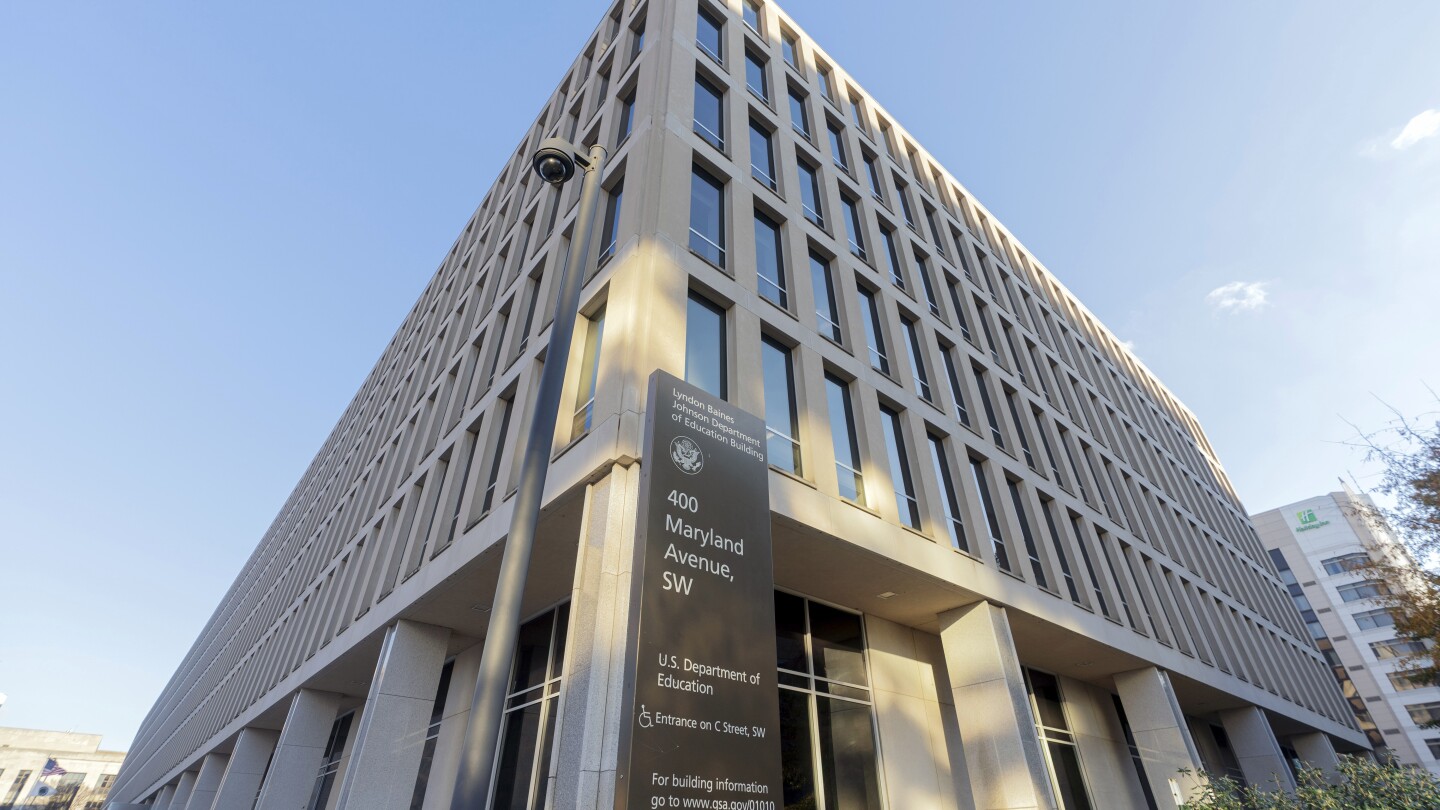Lifestyle
Earth Day and everyday steps to reduce impact of plastic in clothing

Bottles and bags, food wrappers and straws. Piping, packaging, toys and trays. Plastic is everywhere — and yet some people may be surprised at how much they actually wear.
A typical closet is loaded with plastic, woven into polyester activewear, acrylic sweaters, nylon swimsuits and stretchy socks — and it’s shedding into the environment nonstop.
When garments are worn, washed and put through the dryer, they shed plastic fiber fragments. A single load of laundry can release millions that are so tiny wastewater treatment plants can’t capture them all. They wind up in local waterways that connect to the ocean. Marine animals eat them, and that can pass plastic to larger animals and humans.
Even natural fabrics shed fibers and have chemicals that can leach into the environment. But polyester is the most widely used fiber on Earth, and along with other synthetic fibers accounts for about two-thirds of production worldwide.
Tuesday is Earth Day, when people worldwide contemplate ways to reduce their impact on the planet.
“Everyone who wears and launders clothing is part of this problem but everyone who wears and launders clothing can be part of the solutions,” said Rachael Z. Miller, founder of Vermont-based Rozalia Project for a Clean Ocean.
Simple changes like washing clothes less and using cold water instead of hot can help reduce the shedding of fibers. More challenging is that textiles need to be produced and used in a more sustainable way, said Elisa Tonda at the UN Environment Programme. For example, designing clothes that shed fewer microfibers and are high-quality to last longer, said Tonda, who leads the resources and markets branch.
What to do? Start by changing habits
The easiest solution is to wash clothes less often, making for less of the friction that breaks fibers apart, said Anja Brandon, director of plastics policy at Ocean Conservancy.
“They get tumbled and tossed around with a bunch of soaps, really designed to shake things up to get out dirt and stains,” Brandon said.
Miller uses a stain stick to spot-clean. Both say that when clothes are washed, they shed less when put in cold water in full loads to reduce friction, on a shorter cycle, then hung to dry.
Inspired by the way coral filters the ocean, Miller invented the Cora Ball, a laundry ball that can be tossed into the washer to cut down on clothes banging into each other. It also catches microfibers. (A portion of the proceeds goes to the Rozalia Project.) Another option is to put synthetic fabrics in a washing bag that captures fibers.
Rachael Z. Miller, founder of the Vermont-based Rozalia Project for a Clean Ocean, displays a Cora Ball, a laundry ball that can be tossed into the washer to cut down on clothes banging into each other and also catches microfibers, on Thursday, April 17, 2025, in Granville, Vt. (AP Photo/Amanda Swinhart)
Rachael Z. Miller, founder of the Vermont-based Rozalia Project for a Clean Ocean, conducts a tape test on various clothing items to compare how much each material sheds microfibers on Thursday, April 17, 2025, in Granville, Vt. (AP Photo/Amanda Swinhart)
Which clothes shed the most? To find out, press a strip of clear packing tape to a garment, then stick it to white paper to check for fibers, Miller said. Garments that are loosely knit or woven tend to shed more, such as fleece.
Miller said people don’t need to rush to throw out clothing that’s more likely to shed. She owns fleece jackets herself. Instead, she suggested such clothing can be worn indoors only or outside with a layer on top, and it’s worth thinking twice about acquiring more garments like that.
“I try not to guilt or panic people because a lot of this information is very new,” Miller said. “And so we might as well just say, ‘OK, I got it. How can I be strategic about what I’ve got?’”
A push to require filters
Rachael Z. Miller, founder of the Vermont-based Rozalia Project for a Clean Ocean, tosses a Cora Ball, a laundry ball that can be tossed into the washer to cut down on clothes banging into each other, on Thursday, April 17, 2025, in Granville, Vt. (AP Photo/Amanda Swinhart)
Filters can be added to washers to capture microfibers. Samsung Electronics collaborated with Patagonia and the global conservation organization Ocean Wise to launch one in 2023. It’s now sold in more than 20 countries for front-load washers. Bosch recently launched a microfiber filter in Europe for washers.
France was first to adopt a law to mandate that new washing machines sold in the country have a microfiber filter, though implementation has been delayed.
In the U.S., efforts to mandate filters in states have failed. California Gov. Gavin Newsom vetoed a bill in 2023, saying he was concerned about the cost to consumers and he wants to incentivize, not mandate, technologies to remove microfibers in wastewater. In Oregon, state Sen. Deb Patterson proposed a bill this year requiring microfiber filters on new washers sold in that state after she came across the technology in Canada. Patterson said the bill doesn’t have enough support yet but she’ll keep trying.
The Association of Home Appliance Manufacturers opposes the proposals, saying it’s concerned about consumer costs and filter effectiveness.
Changing textiles
Rachael Z. Miller, founder of the Vermont-based Rozalia Project for a Clean Ocean, examines a fleece jacket using a microscope to display the microfibers that make up a single garment on Thursday, April 17, 2025, in Granville, Vt. (AP Photo/Amanda Swinhart)
Some big brands are testing their fabrics to help researchers understand fiber fragmentation, including Adidas, Nike, Patagonia and Under Armour.
They’re among more than 90 brands, retailers and manufacturers to partner with The Microfibre Consortium in the United Kingdom, founded in 2018 to do research and offer solutions to transform textile production — including reducing fiber breakup.
Nearly 1,500 fabrics have been tested. None are the same, making it a tough problem to solve, consortium CEO Kelly Sheridan said.
Patagonia has been a leader in trying to stop the spread of synthetic fiber waste into air and water, saying it’s up to garment brands to prevent it at the source since cleaning up microplastics in the environment is not yet possible.
It paid for its own research starting a decade ago on the implication of its clothes. The company worked with suppliers to choose fabrics and dyes and to finish their clothing in ways that reduce shedding. They collaborated on new filtration technologies for washers, textile mills and municipal systems.
One of their best-known styles is something called the “better sweater” that shifts from virgin polyester to recycled polyester to cut shedding by about 40%, said Matt Dwyer, vice president of global product footprint. And at textile mills, there’s a prewash at the factory that can capture that first big shed, he added.
Dwyer is optimistic about progress.
“There’s a whole lot of smart people, not just understanding the problem and the scope of the problem, but also looking for solutions all the way through the manufacturing cycle and use phase,” he said. “Compared to 10 years ago, it’s a whole new world.”
___
The Associated Press’ climate and environmental coverage receives financial support from multiple private foundations. AP is solely responsible for all content. Find AP’s standards for working with philanthropies, a list of supporters and funded coverage areas at AP.org.
Lifestyle
Oaks are a great tree to plant for Arbor Day

In 1872, a Nebraska newspaper editor and tree lover named J. Sterling Morton proposed dedicating a day to planting trees in his home state. The idea, shall we say, took root.
That year, April 10 became the first organized Arbor Day, and approximately 1 million trees were planted in Nebraska. Two years later, Nebraska Gov. Robert Furnas proclaimed April 10 the state’s Arbor Day.
Other states soon set their own Arbor Day dates to coincide with the best time to plant trees there. And in 1970, President Richard Nixon declared the last Friday in April as National Arbor Day, although many states continue to observe their own, which sometimes align with the national holiday.
If you plan to plant a tree this year, why not consider an oak?
“An oak is the best tree to choose because it is the No. 1 plant for supporting the food web, ” says University of Delaware entomologist and native plants champion Doug Tallamy, the New York Times bestselling author whose books include “The Nature of Oaks.”
“Plants capture energy from the sun and, through photosynthesis, turn it into food — simple sugars and carbohydrates — that supports all the animals on the planet,” Tallamy explained.
“All life on Earth comes from energy provided by the sun,” he said. “But we can’t eat the sun. Plants allow us to do that. We’re essentially eating energy from the sun because plants capture that energy and turn it into food — and oaks are the ones that share the most energy with other living things.”
One reason oaks are so beneficial to the ecosystem is because, as native plants, they evolved alongside native insects, so those insects recognize them as food, Tallamy said. Oaks also belong to a large genus that’s been around for 56 million years, so wildlife has had a lot of time to adapt to them.
In all, there are 91 species of oaks across North America, so, he said, insects from coast to coast have adapted to them.
“A lot of people think they don’t have a property big enough for an oak,” Tallamy said, “but there are dwarf oaks, like Quercus prinoides, a dwarf chestnut oak. And as you go farther west, there are a lot more dwarf oaks” to choose from.
Which oak do you want?
When selecting any plant for your property, it’s important to put the right plant in the right place. So Tallamy advises matching up your soil type and growing conditions with an appropriate oak species.
“Some oaks like acidic soil,” he said. “There are oaks that like base soil. There are oaks that like rocky outcrops and ones that like bottomland.”
Consider, too, your hardiness zone and the sunlight exposure of the site.
“If you put an oak in the front yard in the mid-Atlantic states, for example, it’s going to support 557 species of caterpillars, and all of those are crucial food sources for birds,” Tallamy said.
And I can’t think of a better reason to plant an oak this Arbor Day.
___
Jessica Damiano writes weekly gardening columns for the AP and publishes the award-winning Weekly Dirt Newsletter. You can sign up here for weekly gardening tips and advice.
___
For more AP gardening stories, go to https://apnews.com/hub/gardening.
Lifestyle
Walgreens to pay up to $350 million in U.S. opioid settlement

Walgreens has agreed to pay up to $350 million in a settlement with the U.S. Department of Justice, who accused the pharmacy of illegally filling millions of prescriptions in the last decade for opioids and other controlled substances.
The nationwide drugstore chain must pay the government at least $300 million and will owe another $50 million if the company is sold, merged, or transferred before 2032, according to the settlement reached last Friday.
The government’s complaint, filed in January in the U.S. District Court for the Northern District of Illinois, alleges that Walgreens knowingly filled millions of illegal prescriptions for controlled substances between August 2012 and March 2023. These include prescriptions for excessive opioids and prescriptions filled significantly early.
“We strongly disagree with the government’s legal theory and admit no liability,” Walgreens spokesperson Fraser Engerman said in a statement. “This resolution allows us to close all opioid related litigation with federal, state, and local governments and provides us with favorable terms from a cashflow perspective while we focus on our turnaround strategy.”
Amid slumping store visits and shrinking market share, Walgreens announced it was closing 1,200 stores around the country last October. Rite Aid filed for bankruptcy at the end of 2023 as it was also dealing with losses and opioid lawsuit settlements. The U.S. Department of Justice filed a similar lawsuit against CVS in December.
The complaint says Walgreens pharmacists filled these prescriptions despite clear red flags that the prescriptions were highly likely to be invalid, and the company pressured its pharmacists to fill them quickly. The government alleges Walgreen’s compliance officials ignored “substantial evidence” that its stores were filling unlawful prescriptions and withheld important information on opioid prescribers from its pharmacists.
Walgreens then allegedly sought payment for many of the invalid prescriptions through Medicare and other federal healthcare programs in violation of the False Claims Act, according to the government.
The U.S. Justice Department has moved to dismiss its complaint in light of Friday’s settlement.
“Pharmacies have a legal responsibility to prescribe controlled substances in a safe and professional manner, not dispense dangerous drugs just for profit,” said Attorney General Pamela Bondi in a statement. “This Department of Justice is committed to ending the opioid crisis and holding bad actors accountable for their failure to protect patients from addiction.”
Walgreen has also entered into an agreement with the Drug Enforcement Administration to improve its compliance with rules around dispensing controlled substances, maintain policies and procedures requiring pharmacists to confirm the validity of controlled substance prescriptions, and maintain a system for blocking prescriptions from prescribers that are producing illegitimate prescriptions.
With the U.S. Department of Health and Human Services, Walgreen has agreed to establish and maintain a compliance program that includes training, board oversight, and periodic reporting to the agency regarding the pharmacy’s dispensing of controlled substances.
“In the midst of the opioid crisis that has plagued our nation, we rely on pharmacies to prevent not facilitate the unlawful distribution of these potentially harmful substances,” said Norbert E. Vint, Deputy Inspector General of the U.S. Office of Personnel Management, in a statement.
The settlement resolves four cases brought by former Walgreens employee whistleblowers. In 2022, CVS and Walgreens agreed to pay more than $10 billion in a multi-state settlement of lawsuits brought against them over the toll of the opioid crisis.
Over the past eight years, drugmakers, wholesalers and pharmacies have agreed to more than $50 billion worth of settlements with governments — with most of the money required to be used to fight the opioid crisis.
Lifestyle
US student loans in default to be referred to debt collection

WASHINGTON (AP) — The Education Department will begin collection next month on student loans that are in default, including the garnishing of wages for potentially millions of borrowers, officials said Monday.
Currently, roughly 5.3 million borrowers are in default on their federal student loans.
The Trump administration ’s announcement marks an end to a period of leniency that began during the COVID-19 pandemic. No federal student loans have been referred for collection since March 2020, including those in default. Under President Joe Biden, the Education Department tried multiple times to give broad forgiveness of student loans, only to be stopped by courts.
“American taxpayers will no longer be forced to serve as collateral for irresponsible student loan policies,” Education Secretary Linda McMahon said.
Beginning May 5, the department will begin involuntary collection through the Treasury Department’s offset program, which withholds government payments — including tax refunds, federal salaries and other benefits — from people with past-due debts to the government. After a 30-day notice, the department also will begin garnishing wages for borrowers in default.
The decision to send debt to collections drew criticism from advocates, who said borrowers had experienced whiplash and confusion with the changing student loan policies between the Biden and Trump administrations.
“This is cruel, unnecessary and will further fan the flames of economic chaos for working families across this country,” said Mike Pierce, executive director of the Student Borrower Protection Center.
Already, many borrowers have been bracing for obligations coming due.
In 2020, President Donald Trump paused federal student loan payments and interest accrual as a temporary relief measure for student borrowers. The pause in payments was extended multiple times by the Biden administration through 2023, and a final grace period for loan repayments ended in October 2024. That meant tens of millions of Americans had to start making payments again.
Borrowers who don’t make payments for nine months go into default, which is reported on their credit scores and can go to collections.
Along with the borrowers already in default, around another 4 million are 91 to 180 days late on their loan payments. Less than 40% of all borrowers are current on their student loans, department officials said.
Layoffs at the Federal Student Aid office at the Education Department have made it harder for students to get their questions answered, even if they wanted to pay their loans, said Kristin McGuire, executive director for Young Invincibles, a group that focuses on economic security for younger adults.
And questions are swirling about certain income-driven repayment programs after a February court ruling blocked some of the payment plans. Borrowers in the more lenient, Biden-era SAVE Plan were placed in forbearance, in which borrowers receive relief from payments but still accrue interest. The Education Department in February took down applications for income-driven repayment programs — which tie a monthly payment to a person’s income level — only to bring them back online a month later.
“Things are really difficult to understand right now. Things are changing every day,” McGuire said. “We can’t assume that people are in default because they don’t want to pay their loans. People are in default because they can’t pay their loans and because they don’t know how to pay their loans.”
For borrowers in default, one step to avoid wage garnishment is to get into loan rehabilitation, said Betsy Mayotte, president of The Institute for Student Loan Advisors.
Borrowers must ask their loan servicer to be placed into such a program. Typically, servicers ask for proof of income and expenses to calculate a payment amount. Once a borrower has paid on time for nine months in a row, they are taken out of default, Mayotte said. A loan rehabilitation can only be done once.
Biden oversaw the cancellation of student loans for more than 5 million borrowers. Despite the Supreme Court’s rejection of his signature proposal for broad relief, he waived more than $183.6 billion in student loans through expanded forgiveness programs.
In her statement Monday, McMahon said Biden had gone too far.
“Going forward, the Department of Education, in conjunction with the Department of Treasury, will shepherd the student loan program responsibly and according to the law, which means helping borrowers return to repayment — both for the sake of their own financial health and our nation’s economic outlook,” she said.
___
Associated Press writer Adriana Morga in New York contributed to this report.
___
The Associated Press’ education coverage receives financial support from multiple private foundations. AP is solely responsible for all content. Find AP’s standards for working with philanthropies, a list of supporters and funded coverage areas at AP.org.
-

 Sports1 day ago
Sports1 day agoNBA Playoffs: Steph Curry leads Golden State Warriors to Game 1 win and more from Sunday’s action
-

 Middle East2 days ago
Middle East2 days agoLebanese president says disarming Hezbollah ‘delicate’ as Israel kills two | Israel attacks Lebanon News
-

 Europe7 hours ago
Europe7 hours agoSimone Biles, Mondo Duplantis win big at 25th Laureus World Sports Awards
-

 Africa9 hours ago
Africa9 hours agoKenyan runners win both male and female races at Boston Marathon 2025
-

 Europe1 day ago
Europe1 day agoTrump and Francis, both elected as outsiders, sparred from afar on policy and diverged on leadership style
-

 Sports1 day ago
Sports1 day agoHolger Rune stuns Carlos Alcaraz to win Barcelona Open and end two-year trophy drought
-

 Conflict Zones1 day ago
Conflict Zones1 day agoJailed for fishing: India-Pakistan tensions trap families in debt, poverty | Border Disputes
-

 Asia13 hours ago
Asia13 hours agoIn China, which has a tense relationship with the Vatican, Pope’s death receives muted official response




